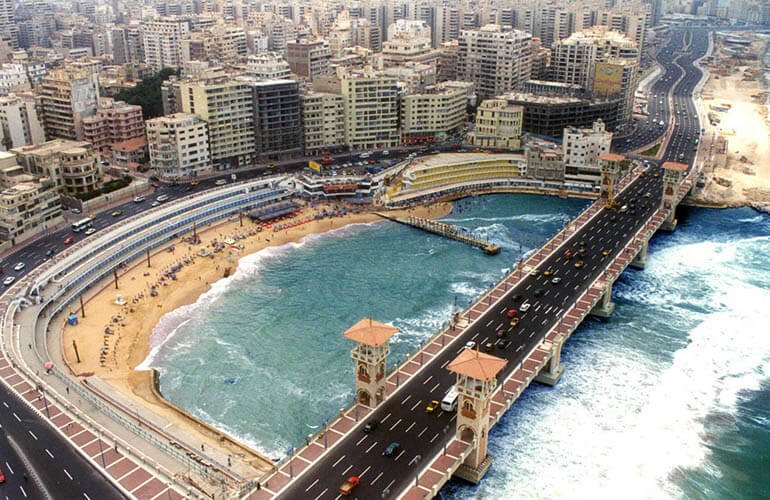
History
Ancient history and settlement.
Recent radiocarbon dating of seashell fragments and lead contamination show human activity at the location during the period of the Old Kingdom (27th–21st centuries BC) and again in the period 1000–800 BC, followed by the absence of activity thereafter. From ancient sources it is known there existed a trading post at this location during the time of Rameses the Great for trade with Crete, but it had long been lost by the time of Alexander’s arrival.[10] A small Egyptian fishing village named Rhakotis existed since the 13th century BC in the vicinity and eventually grew into the Egyptian quarter of the city. Just east of Alexandria (where Abu Qir Bay is now), there was in ancient times marshland and several islands. As early as the 7th century BC, there existed important port cities of Canopus and Heracleion. The latter was recently rediscovered under water.

Geography
Alexandria is located in the country of Egypt, on the southern coast of the Mediterranean. It is in the Nile delta area.
Alexandria has a hot desert climate (Köppen climate classification: BWh),[31] bordering on a hot steppe climate (BSh). Like the rest of Egypt’s northern coast, the prevailing north wind, blowing across the Mediterranean, gives the city a less severe climate from the desert hinterland.[32] Rafah and Alexandria[33] are the wettest places in Egypt; the other wettest places are Rosetta, Baltim, Kafr el-Dawwar, and Mersa Matruh. The city’s climate is influenced by the Mediterranean Sea, moderating its temperatures, causing variable rainy winters and moderately hot and slightly prolonged summers that, at times.


